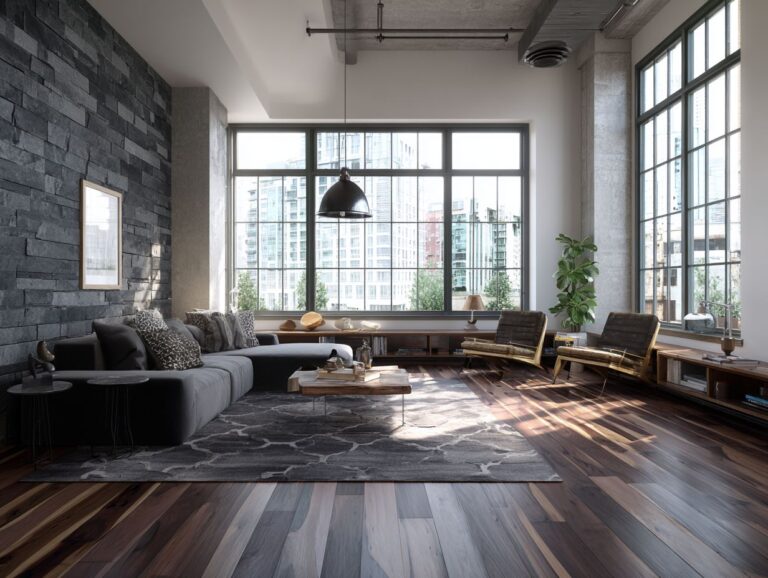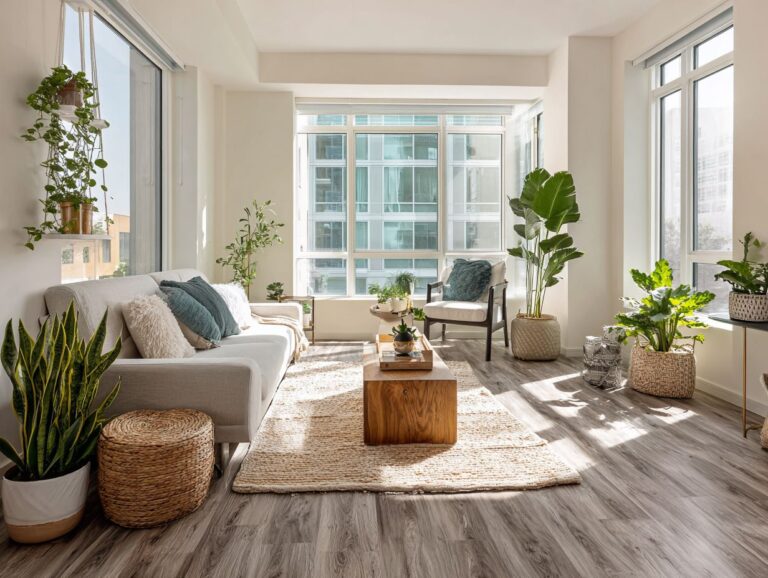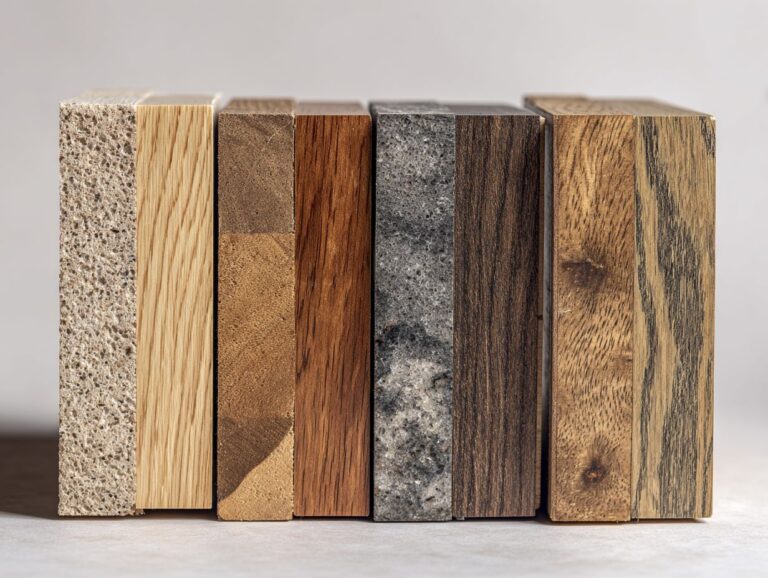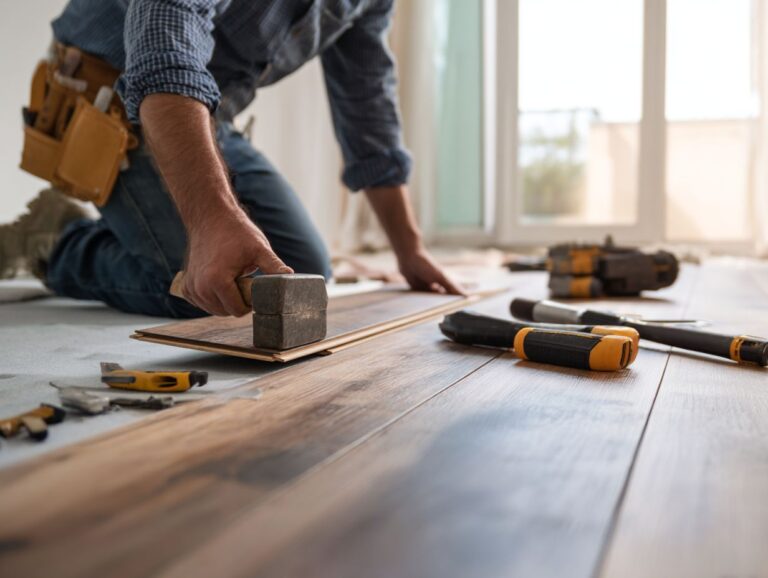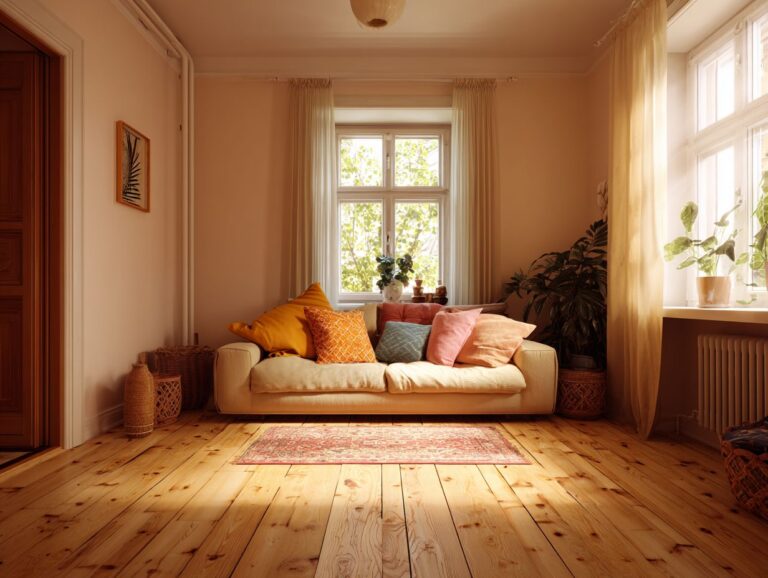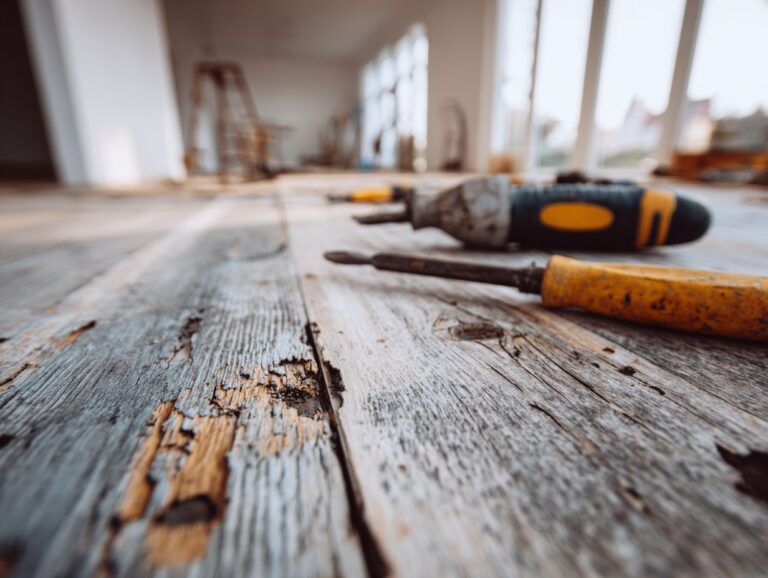Laminate Floor Peaking and Buckling Solutions
Laminate flooring is common in homes, but problems like floors rising and edges sticking up can cause annoyance. Knowing how moisture and temperature changes impact your floors is important for proper care. In this article, we’ll look at simple installation methods and fixes to tackle these usual issues, making sure your laminate flooring remains attractive and strong for many years. Learn how to maintain your floors and save money on repairs!
Key Takeaways:
1. Correct installation methods and managing the surrounding conditions are key to stopping laminate floors from lifting and warping. 2. Regular inspections and proper cleaning and care practices can help maintain the integrity of laminate flooring. 3. To deal with peaking, you can fix or change damaged boards and adjust expansion gaps. For buckling, fix moisture problems and reinstall the affected sections.
Contents
- Laminate Flooring Market Trends and Statistics
- Identifying Peaking in Laminate Floors
- Identifying Buckling in Laminate Floors
- Preventive Measures
- Solutions for Peaking
- Solutions for Buckling
- Long-Term Maintenance Tips
- Frequently Asked Questions
- What leads to laminate floors rising and bending?
- How can I stop laminate floors from lifting and warping?
- What steps should I take if my laminate flooring is rising or bending?
- Can laminate floor peaking and buckling be repaired?
- Can any products stop or fix laminate floor peaking and buckling?
- Is it a good idea to hire an expert to repair laminate floor peaking and buckling?
Understanding Peaking and Buckling
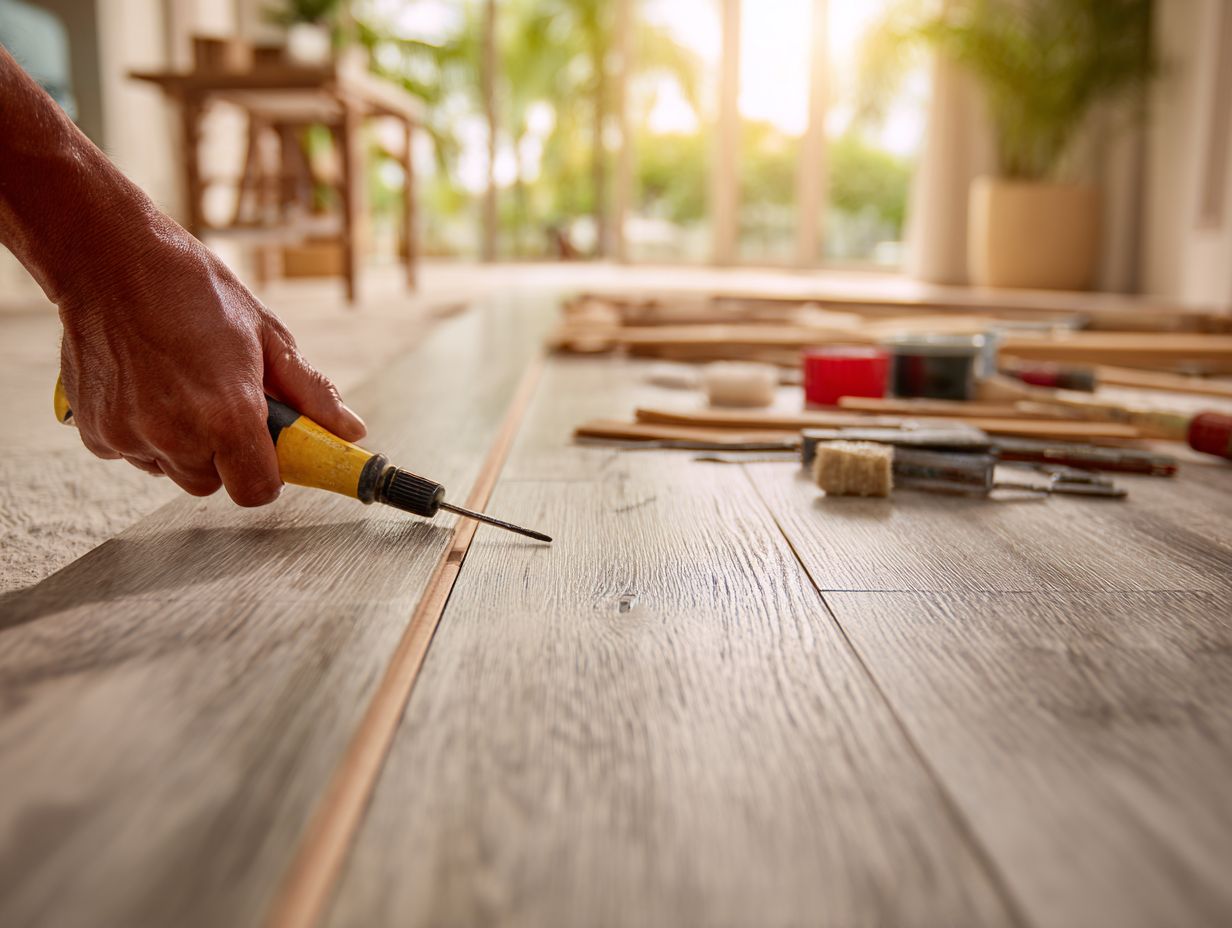
Peaking and buckling are frequent issues in laminate flooring that can lead to an unattractive appearance and potential damage if not addressed promptly.
Peaking occurs when laminate planks expand and press against one another, usually due to moisture or lack of space for expansion. This can create unsightly ridges. To prevent such occurrences, understanding proper flooring expansion gaps is crucial, as these gaps provide the necessary space for the flooring to expand without issues.
In contrast, buckling happens when individual planks lift away from the subfloor, often due to moisture exposure. Both issues can compromise the floor’s integrity, leading to repair costs that can double if left untreated.
Fixing peaking might cost about $200. However, if the problem is not fixed and the subfloor gets damaged, the repair cost could increase to $400.
Laminate Flooring Market Trends and Statistics
Laminate Flooring Market Trends and Statistics
The Laminate Flooring Market Trends and Statistics The report provides detailed information on the shifts in sales, market segments, retail channels, and international trade affecting the laminate flooring industry. This data shows the elements that influence market results and possible ways to improve and change.
Sales Declines highlight a general downturn in the laminate flooring market. In 2024, sales are expected to decline by 7.5%, a slight improvement from the 9.8% decline seen in 2023. However, the drop in volume shows a somewhat different pattern, with a 4.8% decline projected for 2024 compared to a more significant 11.7% in 2023. This suggests while fewer units may be sold, the pace of decline is slowing, potentially indicating stabilization.
- Sales by Market Segment: The 2024 residential replacement market dominates with a substantial 80% share, emphasizing the importance of existing homes as a key driver for sales. In contrast, new home construction accounts for only 12.7% in 2024, reduced from 17.2% in 2023, suggesting a shift or slowdown in new building projects impacting laminate demand.
- Retail Channel Sales: A notable shift occurs in specialty retail share, rising to 30% in 2024 from 22% in 2023, indicating a growing preference for specialized outlets. Meanwhile, Home Depot holds a 27% share, followed by Lowe’s at 16%, reflecting the significant role of large home centers in market distribution.
Import and Domestic Production figures reveal a reduction in imports from China, down to 19% in 2024 from 26% in 2023, possibly due to increased domestic production or trade pressures. Conversely, EPLF shipments to the U.S. stand at 7.3% for 2024, a slight decrease from the 9% rise noted in the prior year, indicating potential fluctuations in European supply.
The Laminate Flooring Market Trends indicate a market in flux, with challenges in sales offset by opportunities in residential replacements and specialty retail growth. Knowing these patterns helps people in the industry manage shifts and take advantage of new trends.
Common Causes of Peaking and Buckling
Peaking and buckling in laminate flooring happen mostly due to incorrect installation and shifts in temperature or humidity.
Moisture damage is a common culprit, particularly when using high-density fiberboard, which can swell if exposed to excessive humidity. Temperature changes can lead to expansion, so it’s important to leave enough space for this when installing.
Letting the flooring adjust to the room’s conditions before putting it in can stop problems later on. For DIY enthusiasts, basic tools and about $100 can cover materials and equipment, while hiring a professional may cost between $500 to $1,000. For an extensive analysis of this process, our deep dive into the flooring acclimation process examines why timing is crucial.
Knowing these factors is important for durable laminate flooring.
Identifying Peaking in Laminate Floors
Discovering peaking in laminate floors early can prevent further damage, allowing homeowners to repair it before costs increase.
Signs and Symptoms of Peaking
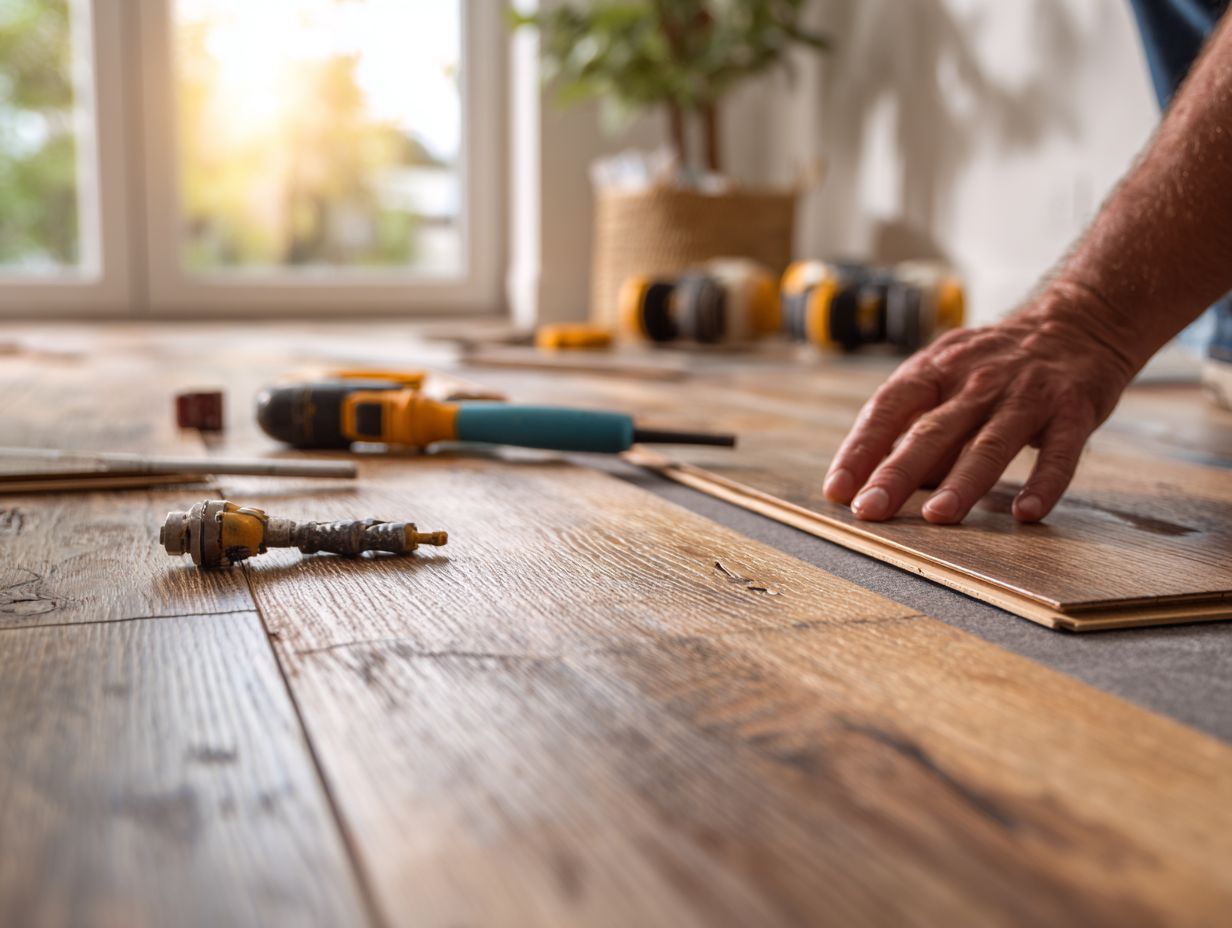
Signs that laminate planks may be peaking include edges that lift at the seams, indicating either excess moisture or insufficient space for the planks to expand.
To see if the floor is level, use a level tool to check for any uneven spots. Simply place the level on various sections of the floor; if it tilts or shows uneven bubbles, you’ve identified problem areas.
Look for tactile experiences too-areas that feel uneven or different to the touch may signify underlying issues. Once you’ve found the problem spots, follow the manufacturer’s advice to make the gaps bigger or address any moisture problems to prevent further peaking.
Regular inspections can help catch these signs early.
Visual Inspection Techniques
Looking closely at laminate floors is important for spotting raised areas, helping homeowners find problems early.
- Start by examining seams between planks; any visible separation may indicate moisture issues or improper installation.
- Next, check for gaps where planks meet-these can lead to further damage if left unaddressed.
- Use a flashlight to reveal hidden moisture stains or discoloration underneath the flooring, as these can signal significant water damage.
- You should look over your laminate floors every three months to keep them in good condition and catch any small problems early.
Identifying Buckling in Laminate Floors
Buckling in laminate floors shows up as large gaps between the boards, often indicating moisture problems that need quick attention.
Signs and Symptoms of Buckling
Signs of buckling include raised or popped planks, gaps between boards, and noticeable warping, often exacerbated by insufficient expansion gaps.
Humidity levels play a critical role in floor buckling. When moisture rises, wood expands; if there’s inadequate space for this expansion, it can lead to warping.
Keep a hygrometer in your home to monitor humidity – ideal indoor levels are between 30% and 50%. If you frequently exceed this range, consider using a dehumidifier or adjusting your home’s ventilation.
Regular maintenance and ensuring proper installation can significantly reduce the risk of buckling, helping to preserve the integrity of your flooring over time.
Factors Contributing to Buckling
High humidity levels and improper acclimation during installation are primary factors contributing to buckling in laminate floors.
To prevent problems, let laminate planks adjust to the room for at least 48 hours before installing them. This process involves laying the unopened boxes flat in the installation space.
Maintain humidity levels between 30% and 50% using a dehumidifier in damp areas. Regularly check moisture levels in the subfloor with a moisture meter, ideally below 12%.
Knowing these things is important for durable laminate flooring because they stop unwanted bending and keep the floor strong.
Preventive Measures
Proper installation and maintenance can greatly reduce the risk of peaking and buckling in laminate flooring.
Proper Installation Techniques
Following the correct installation steps, like keeping enough space for expansion and using good underlayment, helps laminate flooring last a long time.
For best results, maintain at least a 1/4-inch expansion gap around the perimeter of the room to allow for natural expansion and contraction.
Using a top-notch underlayment like Stickit Pro increases comfort and absorbs sound, which helps to lower noise levels. It’s important not to nail or glue laminate planks, as this can stop them from moving naturally. Avoiding these common installation mistakes ensures a durable and attractive finish.
If you are not confident in installing the floor yourself, it might be a good idea to hire a professional, particularly for big spaces or complex designs, to keep the floor intact and looking good.
Environmental Control
Maintaining optimal humidity levels using tools like dehumidifiers can effectively prevent moisture-related issues in laminate flooring.
To effectively manage humidity, consider these strategies:
- First, invest in a dehumidifier, which typically costs between $150 and $300 depending on capacity.
- Second, regularly monitor humidity levels with a hygrometer; readings between 30-50% are ideal for most homes.
- Improve airflow by opening windows or turning on exhaust fans, especially when it is humid.
For example, a homeowner in Florida reduced mold growth significantly after incorporating a dehumidifier and establishing a regular venting schedule, showcasing the importance of proactive humidity control.
Acclimation of Laminate Flooring
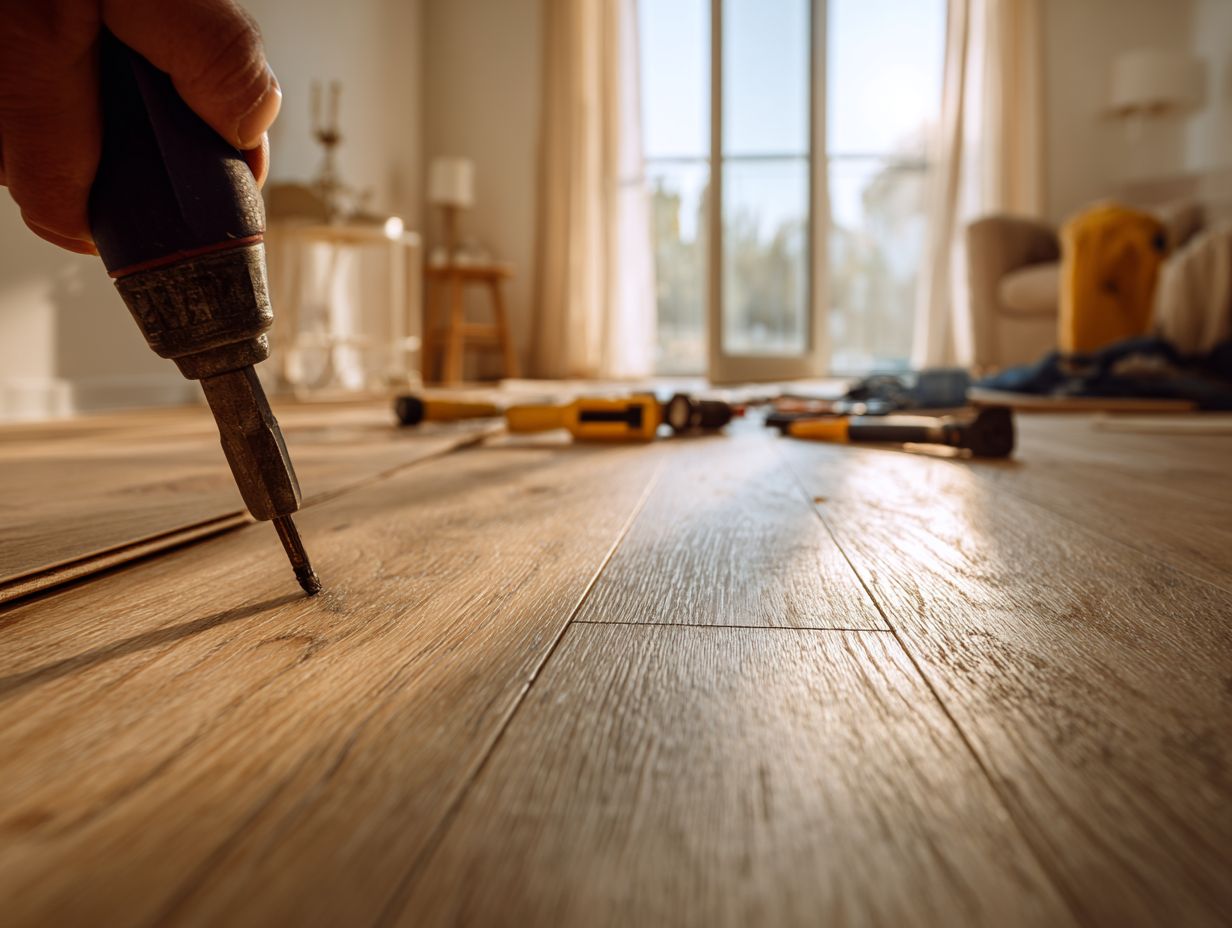
Acclimating laminate flooring before installation helps mitigate issues arising from temperature fluctuations and moisture exposure.
To properly acclimate your laminate flooring, start by leaving the planks in the installation area for 48-72 hours. This step is important because it lets the wood settle to the room’s temperature and humidity. This lowers the chance of it bending or twisting after it’s put in.
Keep the room temperature between 60-80 degreesF because cooler conditions can slow down adjustment. Unbox the planks to facilitate airflow, preventing moisture buildup that could lead to damage.
Ignoring these steps may result in costly repairs and dissatisfaction with your flooring.
Solutions for Peaking
Fixing laminate flooring that is lifting can stop more damage and make it look better.
Adjusting Expansion Gaps
Adjusting the expansion gaps helps reduce peaking by allowing the laminate planks to move freely.
- To begin, identify areas where gaps are insufficient, focusing on corners and joints.
- Use a pry bar to gently lift the laminate planks, being careful not to damage them. When creating new gaps, make sure they are at least 1/4 inch wide to allow for proper movement.
- Tools such as a laminate flooring spacer can help maintain consistent spacing during installation.
- To sum up, check each gap again after making repairs, and watch for any new problems to keep your floor looking good and in good shape.
Repairing or Replacing Damaged Boards
To restore the floor’s strength and look after peaking problems, it is necessary to repair or replace damaged boards.
Start by identifying the damaged boards, which might be warped or scratched. Use a pull bar to gently remove these planks without damaging surrounding ones.
Next, put in new laminate planks, preferably from the same brand for a good match. Replacement planks usually cost between $3 to $5 per square foot, so it’s a doable DIY project if you know how to work with tools.
Hiring a professional instead can cost between $1 and $3 per square foot, offering confidence to people who aren’t familiar with home repairs.
Solutions for Buckling
Identifying and repairing buckling issues quickly can prevent serious harm, so homeowners should act without delay.
Identifying and Addressing Moisture Issues
Identifying and addressing moisture issues is critical for preventing further buckling in laminate flooring, ensuring long-term durability.
- Begin by inspecting the subfloor for visible signs of moisture damage, such as mold or warping.
- Next, use a hygrometer to measure indoor humidity levels; aim for a range of 30-50% for optimal conditions.
- If the air is damp, use a dehumidifier. It usually costs about $200 and works well to lower moisture.
- Applying water-resistant barriers or coatings on the subfloor can further protect against ingress.
These proactive steps will greatly improve how long your laminate flooring lasts and how well it works.
Reinstalling Affected Sections
Reinstalling affected sections of laminate flooring can effectively resolve buckling issues and restore the floor’s functionality.
Begin by using a pry bar to carefully remove the damaged laminate sections. Make sure the subfloor is dry and even before continuing. This might mean fixing water damage or smoothing out uneven areas.
Next, cut new laminate planks to fit the area you’re replacing, ensuring they match the existing flooring. Install the new planks, securing them as per manufacturer instructions.
Expect this project to take about 2-4 hours, or hire a professional for an estimate ranging from $100 to $300 depending on the workload.
Long-Term Maintenance Tips
By following tips for taking care of laminate flooring, you can make it last longer and avoid problems like swelling and bending later on.
Regular Inspections
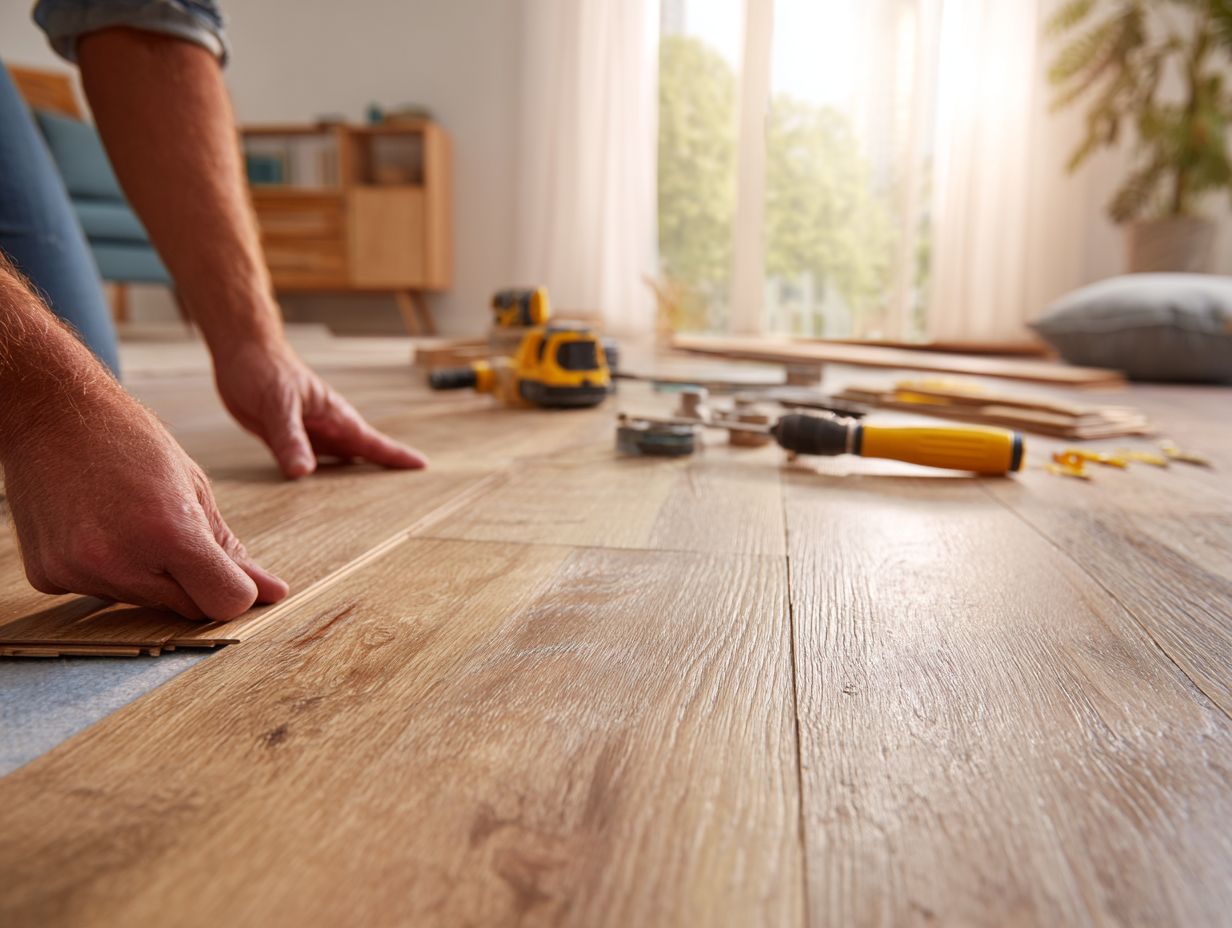
Checking laminate flooring often allows homeowners to find small issues before they become big problems.
Schedule your laminate flooring inspections at least quarterly. During each check, examine for moisture around edges, gaps between planks, and surface wear.
Use the following checklist:
- Ensure there are no signs of warping
- Look for loose seams
- Check for scratches or dents
Keeping a detailed log of your findings will help track changes over time and inform any necessary repairs. If you find any problems, think about using laminate floor repair kits or hiring a professional to quickly fix major damage.
Cleaning and Care Practices
Using the right cleaning methods is important for keeping laminate flooring looking good and lasting a long time without causing damage.
To effectively clean laminate floors, adopt these practices:
- Use a microfiber mop to avoid scratching.
- Use a slightly wet mop instead of a very wet one to control moisture.
- Always clean spills immediately to prevent staining.
For safe products, consider pH-balanced cleaners specifically made for laminate, like Bona Hard Surface Cleaner.
Establish a monthly deep-cleaning routine that includes vacuuming to remove dust and debris, followed by a thorough damp mopping. This careful approach will help preserve your flooring’s shine and durability for years.
Summary of Key Solutions
Key solutions for addressing laminate flooring issues include proper installation techniques, moisture control, and regular maintenance checks.
For a durable laminate floor, pay attention to installation techniques like adding foam underlayer to minimize moisture and noise.
Regularly check for gaps between boards and remedy them with a laminate filler. Maintain your flooring by sweeping or vacuuming weekly and using a damp mop with a suitable cleaner once a month.
Using these methods makes your flooring last longer and keeps it looking good.
When to Seek Professional Help
Knowing when to call a professional can help homeowners avoid wasting time and costly mistakes in maintaining and repairing laminate floors.
Consider hiring a professional in the following situations:
- Extensive moisture damage, which may lead to mold and requires immediate attention;
- Complex repairs, such as fixing warped boards or improperly installed planks, necessitating specialized tools;
- Lack of the right tools or experience, especially if the job requires detailed cuts or essential repairs.
Professional fees usually vary between $50 and $150 per hour, based on the difficulty of the task and where you are located. It’s important to consider your abilities and resources before moving forward.
Frequently Asked Questions
What leads to laminate floors rising and bending?
Laminate floor swelling and lifting can happen because of mistakes in installation, moisture issues, and changes in temperature.
How can I stop laminate floors from lifting and warping?
To avoid bending and warping, make sure the laminate flooring adjusts to the room before you put it in, and check that the floor underneath is even and dry. Following manufacturer instructions and leaving spaces for expansion can prevent these problems.
What steps should I take if my laminate flooring is rising or bending?
If you see that your laminate flooring is rising up or bending, start by finding out why it’s happening and fix the issue. This might mean solving problems with dampness or heat, and making any needed fixes or changes to how things are set up.
Can laminate floor peaking and buckling be repaired?
Sometimes, you can fix laminate floors that are peaking and buckling by repairing the underlying floor and the laminate itself. In very bad situations, the floor might have to be fully changed.
Can any products stop or fix laminate floor peaking and buckling?
Yes, there are items like moisture barriers, leveling compounds, and adhesive tapes that can stop or repair laminate floor lifting and bending. Talk to a professional before using these products to confirm they suit your situation.
Is it a good idea to hire an expert to repair laminate floor peaking and buckling?
If your floor has severe bumps or warps, it is best to hire a professional to repair it. They have the knowledge and experience to properly identify and address the cause of the problem, and make necessary repairs or replacements.
